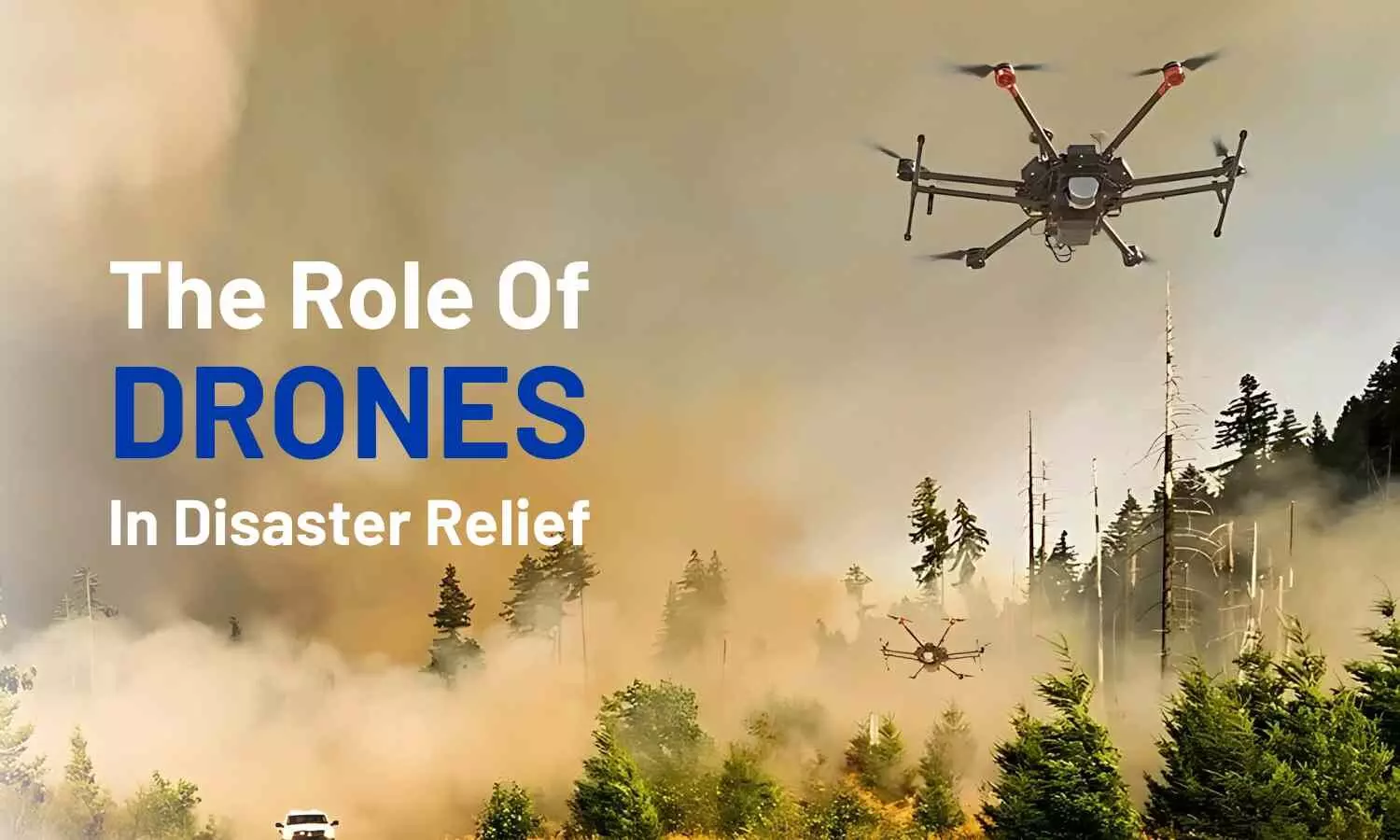How Drones are Transforming Disaster Relief Efforts
Discover how drones are revolutionising disaster relief, offering faster response times, real-time assessments, and critical supply deliveries to aid affected communities efficiently.
How Drones are Transforming Disaster Relief Efforts

Over the past ten years, the application of drones has changed drastically in many different sectors. This is also applied in catastrophe management and spans the commercial and agricultural sectors. Still, there are extremely few instances where major disasters have involved drones. Though it is yet unknown how drones will be used in major disasters, there is hope.
The government of India encourages the use of drones in different sectors, and drones are used to lessen the load and challenges the government faces resulting from disaster management. Although different tasks could be carried out in the future, drones have lately been deployed for search and rescue operations. In this article, we shall further explore the importance and use of drone technology in the management of natural disasters.
Significance of Drone Technology for the Management of Disasters
In disaster management, accurate data collection is crucial to grasp the severity of the situation. India has, for instance, seen multiple natural disasters like the 2004 Indian Ocean tsunami, the 2013 Uttarakhand floods, and the 2018 Kerala floods. Among the few events that have caused significant property and death loss are these.
Drone technology enables the authorities to scan across a vast area. This helps experts to evaluate the scenarios by including high-resolution pictures and real-time data. Manual examination is more complex; the time spent evaluating the matter could do more harm.
Among noise sensing, binary sensing, heat sensing, etc., the drone can detect the live victim. This enhances drone capacity in disaster management.
Drone Applications for Disaster Management
Charting Disaster Management
In the framework of disaster management, the drone supports monitoring, mapping, and damage assessment. Drones have been used in disasters, including floods, landslides, hurricanes, tsunamis, etc. When we contrast drone utilisation with more traditional approaches, drones are more efficient and less expensive.
By offering continuous 2D and 3D data collection with little time invested, drones also help evaluate erosion and flooding. Furthermore, drones need less time to return to the point of action and are flexible enough to fit several surroundings. By using drone technology in disaster management, one can get to difficult locations.
Moreover, compared to single-purpose drones, using multifarious drones in disaster management helps boost efficiency. Using deep learning techniques, the new-age drone technology generates precise findings.
Search and Relief
Thanks to their capacity, drones in search and rescue have proliferated recently. Over the past few years, different studies have been carried out on the topic in several settings. Drones help the search and rescue team obtain top-notch pictures of the challenging terrain. Without any outside help, this quickens the search-rescue operation.
Recently, in a study project, scientists modelled a rescue scenario using drone methods to find the victim in snow-covered surroundings. Compared to rescuers, they found that drones could find the casualty in a big area in quite a short time. Drone technology integrates the multi-object tracking method, which compiles the data depending on colour and depth. This information proves to be rather helpful for victim identification. Furthermore, deep learning techniques and image algorithms were included to improve human detection accuracy. This is coupled with GPS to give rescue workers a real-time view.
Mode of Transportation
Researchers, most specifically in medical and emergency supplies, have shown great interest in the application of drone technologies in transportation. Drone technology allows the government to distribute emergency supplies to impacted and difficult-to-reach areas—where helicopters have been employed historically.
From a low altitude or ground landing, drone technology is among the safest means of delivering emergency medical supplies. Furthermore, drone technology can take and provide blood samples and other items, such as medications respectively. Drones have been used in several tests on hospital grounds to help with floor-based medicine supply. Along with human error, this will cut delivery time during an emergency.
Drones can be utilised in any natural disaster to assist injured or wounded people. Furthermore, drone technology is in constant technological development and requires more power to transport humans; drones can save lives during crises. Future drone technologies include quadcopters, hexacopters, and fixed-wing drones that can airlift victims—including pregnant women, infants, children, and elderly citizens—in the future.
In conclusion, drones are transforming disaster relief efforts by offering rapid, accurate, and efficient support that has the potential to save lives and conserve vital resources. With their capability to access remote areas, provide real-time assessments, and deliver critical supplies, drones have become indispensable for first responders and humanitarian organisations. As technology advances, drones will likely play an even more essential role in disaster response, accelerating community
recovery from both natural and human-made crises. Embracing this technology paves the way for more resilient, prepared societies equipped to tackle future challenges with innovative, effective solutions.

